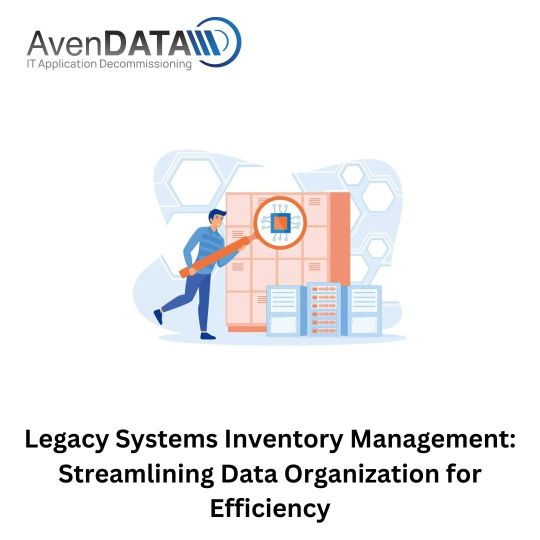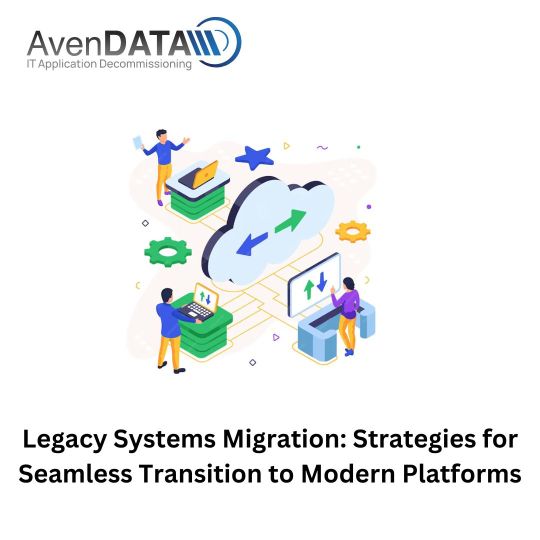#Legacy System
Explore tagged Tumblr posts
Text
Unveiling the Hidden Dimensions of Human Perception and Purpose.
Human perspectives serve as intriguing reference points that offer profound insights into both apparent and hidden dominions of existence.
Our thinking is often shaped by deep-rooted indoctrination, a form of mental programming historically crafted by governing entities to mold humanity from its primordial state.
This conditioning influences how we perceive our roles and purposes within the collective legacy system.
Throughout multiple lifetimes and through moments of awakening, individuals recollect knowledge acquired across their existence. This process often involves aligning one's purpose with the collective, contributing uniquely to the societal fabric.
While traditional learning methods focus on the five elemental states, modern reliance on digital and print media perpetuates this indoctrination, limiting a broader and more critical understanding.
Engagement with nature and direct interaction with other species, whether wild or domesticated, can reveal one's original intentions and inherent purpose. Such experiences reconnect us with our primordial state and align us with The Source, providing answers to our deepest quandaries and offering unexpected solutions.
For Further Reflection
— Examining Indoctrination: Reflect on the origins and impacts of mental programming imposed by governance. How does this shape our collective and individual perceptions, and what steps can be taken to break free from this cycle?
— Reconnecting with Nature: Consider the benefits of direct engagement with the natural world. How does immersion in nature and interaction with diverse species enhance our understanding of purpose and existence?
— Beyond Elemental States: Challenge the traditional focus on the five elemental states. What other states or dimensions of existence are we overlooking, and how can acknowledging them broaden our perspective?
— Role of Awakening: Explore the concept of awakening through multiple lifetimes. How does recollecting past knowledge and experiences shape our current purpose and contribution to the collective?
— Source as the Answer: Delve into the idea of The Source as the ultimate solution to life's quandaries. How can a deeper connection with this concept provide clarity and direction in our lives?
— Mle. AainaA-Ridtz A R, Unveiling the Hidden Dimensions of Human Perception and Purpose
#Perspective#Indoctrination#Primordial State#Legacy System#Awakening#Elemental States#Ladunni#Ayn Sof#Digital Medium#Nature Connection#Critical Notes#Humanity#Original Intention#Divine Source#The Source#Mastery#Shadow Work#Ascension#aainaa-ridtz#sainte communion#transcendance#voyage#tasawwuf
3 notes
·
View notes
Text
one of the old telescopes I work near has most of its data filtered through the knowledge of one man who was there to build it and its predecessors. he's the only one authorized to touch or supervise people touching any of the internal wiring. the man is in his 80s and everyone is too scared to learn how to do any of it because the training for it is so long and the telescope is so expensive. the only reason he can is because he made the training like 50 years ago
the world is running out of glassblowers and yet you want to become a fucking doctor
#im approximating#telescopes#astronomers#astronomy#instrumentation#science side of tumblr#different kind of#legacy system
161K notes
·
View notes
Text

Legacy systems often power the backbone of enterprise operations, yet their outdated nature poses growing challenges in an age of digital transformation. This blog explores the dual role of legacy infrastructure—its critical function and the risks it brings, including high maintenance costs, security vulnerabilities, and scalability limitations. Learn how businesses can uate legacy system relevance, mitigate risks, and implement strategies such as system decommissioning, data archiving, and migration to modern platforms. With AvenData’s expertise, organizations can turn legacy burden into a launchpad for innovation, compliance, and long-term growth without disrupting essential business functions.
#legacy software systems#legacy system#Legacy Systems#legacy system migration#legacy system migration strategy#legacy software
0 notes
Text
Reassessing Legacy Systems: Challenge or Catalyst for Modern Business?
Legacy systems often serve as the backbone of enterprise operations—but they come with hidden costs. This blog delves into the complex role these outdated technologies play in today's digital era, weighing their benefits against the barriers they pose to innovation. Learn how organizations can strategically assess, manage, and modernize legacy infrastructure through methods like system decommissioning and data archiving. Ideal for IT leaders looking to balance operational stability with transformation, this guide offers insights into turning legacy systems from obstacles into opportunities for growth.
#legacy software systems#legacy system#Legacy Systems#legacy system migration#legacy system migration strategy#legacy software
0 notes
Text
African MNO’s Triumph: 8% Fall in Customer Churn
The client, a major African 4G LTE operator, aims to enhance their customer experience and penetrate new market segments. They plan to achieve this by migrating from their legacy BSS system to a comprehensive digital platform that converges all operations onto a single system.
The seamless migration from multiple legacy platforms to the Csmart platform represents a significant step in our digital transition journey. It has not only reduced operational complexities but also improved system performance and reliability.
8-Percentage-Drop-in-customer-churn-Rate- for-African-MNO-V3 copy (csmart.digital)
0 notes
Text
Assessing the Lifecycle of a Legacy System: When to Upgrade or Replace

In the fast-paced world of technology, businesses often find themselves grappling with the challenge of managing legacy systems. These systems, which were once the backbone of operations, can become a hindrance as technology evolves. Deciding when to upgrade or replace a legacy system is a crucial decision that can significantly impact an organization’s efficiency, security, and competitiveness. This blog delves into the key factors to consider when assessing the lifecycle of a legacy system and provides insights on making informed decisions about upgrading or replacing these systems.
Understanding Legacy Systems
Legacy systems are outdated software or hardware that remain in use despite the availability of more modern solutions. These systems are often critical to business operations, making their replacement or upgrade a complex task. However, the drawbacks of maintaining legacy systems, such as high maintenance costs, security vulnerabilities, and limited compatibility with newer technologies, often outweigh the benefits of their continued use.
Key Factors to Consider
Performance and Reliability
Assessment
Evaluate the performance and reliability of your legacy system. Are there frequent downtimes or performance bottlenecks? Do these issues affect productivity and customer satisfaction?
Decision Point
If the system's performance is consistently hindering business operations, it may be time to consider an upgrade or replacement.
Maintenance Costs
Assessment
Consider the ongoing maintenance costs associated with the legacy system. This includes not only financial costs but also the time and effort required to keep the system running.
Decision Point
High and increasing maintenance costs, especially when they surpass the cost of implementing a new system, indicate that replacement or significant upgrading is necessary.
Security Vulnerabilities
Assessment
Legacy systems often lack the security features of modern solutions, making them susceptible to cyber threats. Assess the potential risks and the cost of mitigating these vulnerabilities.
Decision Point
If the system poses a significant security risk that could lead to data breaches or compliance issues, replacing it with a more secure solution should be prioritized.
Compatibility and Integration
Assessment
Determine how well the legacy system integrates with modern technologies and other systems within your organization. Compatibility issues can lead to inefficiencies and limit your ability to leverage new technologies.
Decision Point
If the legacy system is causing integration challenges and hindering the adoption of new technologies, upgrading or replacing it is advisable.
Vendor Support and Expertise
Assessment
Evaluate the level of support and expertise available for the legacy system. As systems age, vendors may discontinue support, making it difficult to resolve issues and maintain the system.
Decision Point
Lack of vendor support and difficulty in finding skilled professionals to maintain the system are strong indicators that it’s time for an upgrade or replacement.
User Experience
Assessment
Consider the user experience and productivity associated with the legacy system. Are employees frustrated with its limitations and inefficiencies?
Decision Point
If the system is negatively impacting user experience and productivity, modernizing it can lead to significant improvements in employee satisfaction and operational efficiency.
Making the Decision: Upgrade or Replace?
Upgrade
Upgrading a legacy system involves enhancing its existing capabilities, often by integrating modern features or improving performance. This option can be cost-effective and less disruptive than a complete replacement. Consider upgrading if:
- The core functionality of the system still meets business needs.
- The system can be modernized with reasonable investment.
- Compatibility issues with new technologies can be resolved through upgrades.
Replace
Replacing a legacy system means implementing a new solution that meets current and future business requirements. This option can be more costly and disruptive but often provides long-term benefits. Consider replacing if:
- The system is fundamentally outdated and cannot support modern business operations.
- Maintenance and security costs are excessively high.
- Integration challenges are insurmountable.
- The system's limitations significantly hinder business growth and innovation.
Conclusion
Assessing the lifecycle of a legacy system requires a thorough evaluation of its performance, costs, security, compatibility, support, and user experience. By carefully considering these factors, organizations can make informed decisions about whether to upgrade or replace their legacy systems. Embracing modernization not only enhances efficiency and security but also positions businesses for future growth and innovation.
0 notes
Text
Legacy Systems Inventory Management: Streamlining Data Organization for Efficiency

Introduction
In the realm of archive management, one of the most crucial tasks is effectively managing the inventory of legacy systems data. With the accumulation of historical data over years or even decades, organizations often find themselves grappling with the challenge of cataloging and organizing vast amounts of information stored within legacy systems. "Legacy Systems Inventory Management" represents a strategic approach to streamline data organization, ensuring efficiency, accessibility, and compliance in archive management.
The Challenge of Legacy Data Overload
Legacy systems often contain a plethora of data accumulated over the course of their operation. This data may include historical transaction records, customer information, financial data, and more. However, without proper inventory management strategies in place, organizations risk drowning in a sea of unorganized and unstructured data. The challenge lies in cataloging and organizing this data in a way that facilitates easy retrieval, analysis, and compliance with regulatory requirements.
Adopting a Systematic Approach to Inventory Management
To effectively manage the inventory of legacy systems data, organizations must adopt a systematic approach that encompasses both technology and processes. This begins with conducting a comprehensive inventory audit to identify all legacy systems and the data they contain. Once the inventory is established, organizations can then implement robust cataloging and tagging mechanisms to categorize and organize data based on relevance, sensitivity, and other criteria. This systematic approach not only enhances data organization but also facilitates efficient retrieval and compliance with regulatory requirements.
Leveraging Automation and Technology Solutions
In the digital age, organizations have access to a wide range of automation and technology solutions that can streamline inventory management processes. Automated inventory management tools can scan legacy systems, identify data assets, and generate detailed inventory reports automatically. Additionally, organizations can leverage metadata management solutions to enrich data with descriptive tags and attributes, making it easier to search, filter, and retrieve information. By harnessing the power of automation and technology, organizations can significantly reduce the manual effort required for inventory management while improving accuracy and efficiency.
Implementing Governance and Compliance Measures
Effective inventory management goes hand in hand with governance and compliance measures to ensure the integrity, security, and privacy of legacy systems data. Organizations must establish policies and procedures for data access, storage, retention, and disposal, aligning with regulatory requirements and industry best practices. Additionally, regular audits and reviews of inventory data are essential to identify any discrepancies or vulnerabilities and address them promptly. By implementing robust governance and compliance measures, organizations can mitigate risks and ensure the integrity and security of their legacy systems inventory.
Conclusion: Optimizing Efficiency and Compliance in Archive Management
In conclusion, legacy systems inventory management is a critical component of archive management, ensuring efficiency, accessibility, and compliance with regulatory requirements. By adopting a systematic approach, leveraging automation and technology solutions, and implementing governance and compliance measures, organizations can streamline data organization processes, enhance data integrity and security, and unlock the full potential of their legacy systems data. In doing so, they pave the way for more efficient and effective archive management practices, enabling them to derive maximum value from their historical data assets.
#carve-out#it application decommissioning#mergers and acquisitions#system decommissioning#sap system#insolvency#legacy system#liquidation
0 notes
Text
I think that one of the most underrated reveals in Scum Villain was that Luo Binghe inherited his big dick toxic alpha male energy from his birth mother, and it actually has nothing to do with his demon side.
#svsss#scum villain's self saving system#luo binghe#housewife aspirations = washerwoman mom#shameless bottom energy = tlj's side of the family#melodrama = great author god airplane's contributions#communication issues = shizun's legacy#ruthless top-only stallion yandere with serial atticwifer potential = su xiyan
8K notes
·
View notes
Text
Understand how the modernization of legacy accounting system helped a USA based company to be more productive, responsive, and profitable.
0 notes
Text
Insolvency is a financial state where a company is unable to meet its financial obligations, including debt repayments and operational costs. In the IT sector, company insolvency can arise from factors such as market shifts, failed projects, or mismanagement of resources. Insolvency can hinder a company’s ability to operate effectively, jeopardize client relationships, and lead to legal actions by creditors. For IT companies, insolvency could result in project delays or cancellations, affecting clients’ trust and potentially leading to reputational damage. Additionally, the complex nature of IT contracts and ongoing service agreements can complicate the resolution of insolvency issues.
Please click below link to read more:
0 notes
Text

Legacy systems may power mission-critical operations, but their aging architecture can stifle innovation, drive up maintenance costs, and expose businesses to compliance and security risks. This blog explores the evolving role of legacy systems in today’s digital landscape—highlighting the risks of inaction and the opportunities in transformation. Learn how organizations can assess the true cost of outdated infrastructure and implement strategies like system decommissioning, data archiving, and smart migration. Discover how to shift from IT stagnation to scalable growth by treating legacy systems not as liabilities, but as launchpads for modernization and digital evolution.
#legacy software systems#legacy system#Legacy Systems#legacy system migration#legacy system migration strategy#legacy software
0 notes
Text
Legacy Systems Uncovered: Risks, Relevance, and the Road to Modernization
Explore the evolving role of legacy systems in today's digital landscape. This guide highlights the risks, benefits, and challenges of maintaining outdated technologies—and offers strategic insights for transitioning to secure, scalable, and future-ready IT infrastructures.
0 notes
Text
i'm a disgusting little centrist when it comes to the was shrue's family real or fake question because to me that matters much less than the way it illustrates the experience of paranoid stress psychosis. like i never want a definitive answer because it just doesn't really matter. do you understand me. like. either way, they experienced that loss and heartbreak. they were confronted with an unflattering portrait of themself as a destructive absence in other people's lives, sacrificing human connection for sociopolitical status. they were exploited and had their mind fucked with and were made vulnerable to manipulation. answering that question makes no difference to the fact that what they experienced was real and horrifying to them. they were vulnerable and someone noticed and took advantage. there is no absolution nor satisfaction to be found in certainty, only further pain and regret. the end outcome is the same.
#🐉#ambiguity forever is just so much more interesting to me! sorry!#like if shrue lived my ideal arc for them would be reckoning with the fact that either way they were both a victim#and dug their own grave. like if they did have a family they were an avoidant hypocrite unable to bear the cognitive dissonance#of destroying other peoples families and communities while trying (and failing) to nurture their own legacy.#and if they didnt then they know deep down that they would have been a terrible spouse and parent because they would have#been unable to fully open themself up to loving them because that would mean acknoweldging their bitter loneliness#and desparation for social stability and fear of never attaining it. which a family would only be a crutch for.#and an increasingly burdensome and insufficient one at that#either way they neglected their responsibility to the people they were supposed to protect#the family is a symbolic and more immediately devastating representation of that greater guilt#and before anyone says oh you just want to absolve val of any wrongdoing because shes your favourite#shes uh. very much not absolved of anything. whether or not she bears any personal responsibility in this instance#doesnt change the fact that shes complicit in the violence of the system that enables abuses like this to happen. as is shrue themself.#theres no circumventing that culpability. carson just took advantage of it for his own gain as he tends to do.#the silt verses#shrue
562 notes
·
View notes
Text
Okay okay okay.. but listen. What if Shen Yuan had a harsher System and was forced to convincingly play Shen Qingqiu, making Luo Binghe detest his existence, but when Luo Binghe returns from the abyss to enact his revenge and has Shen Qingqiu on trial at Huan Hua, unfortunately for everyone (and fortunately for us), they drug Shen Qingqiu with truth serum and accidentally spiral Shen Yuan into fanboy rampage of epic proportions about how great Luo Binghe is.
#I imagine a very confused lbh is like ‘if you liked me that much wtf did you treat me so bad’ and sy is like ‘have you ever told god no?’#truth serum makes sy blame everything on an unspecified god#idk it just sounds like it could make for entertaining crack treated seriously#I’m sure his rant is an exemplary example of peerless cucumbers legacy#svsss au#mxtx svsss#sqq svsss#svsss#svsss fanfiction#svsss fic#svsss luo binghe#svsss shen qingqiu#svsss shen yuan#svsss shitpost#shen yuan#shen qingqiu#scum villain self saving system#scum villain's self saving system#scumbag self saving system#scumbag system#luo binghe#luo bingge#mxtx hell#mxtx fandom#mxtx fanfic#bingqiu#bingqiu fanfic#peerless cucumber#danmei#danmei fandom
2K notes
·
View notes
Text
Legacy Systems Migration: Strategies for Seamless Transition to Modern Platforms

Introduction
In the ever-evolving landscape of technology, legacy systems migration represents a critical juncture for organizations seeking to modernize their IT infrastructure and stay competitive in today's digital marketplace. However, the transition from legacy systems to modern platforms is not without its challenges. In this article, we explore strategies for achieving a seamless and successful migration, ensuring that organizations can leverage the benefits of modern technology while preserving the value of their legacy systems.
Assessing the Landscape: Understanding the Scope and Complexity
The first step in any legacy systems migration project is to assess the landscape and understand the scope and complexity of the undertaking. This involves conducting a comprehensive inventory of existing systems, applications, and data, as well as identifying dependencies, interdependencies, and potential roadblocks. By gaining a clear understanding of the current state of the IT environment, organizations can develop a roadmap for migration that addresses key challenges and priorities.
Developing a Migration Strategy: Prioritizing Objectives and Milestones
Once the landscape has been assessed, the next step is to develop a migration strategy that prioritizes objectives and milestones. This involves defining clear goals for the migration, such as improving performance, enhancing security, reducing costs, or enabling new capabilities. Additionally, organizations should establish measurable milestones and timelines to track progress and ensure alignment with business objectives. By developing a strategic approach to migration, organizations can minimize risks and disruptions while maximizing the benefits of modern platforms.
Choosing the Right Tools and Technologies: Leveraging Automation and Integration
In the age of digital transformation, organizations have access to a wide range of tools and technologies that can facilitate the migration process. From automated migration tools to integration platforms and cloud services, these technologies offer efficient and cost-effective ways to migrate legacy systems to modern platforms. By leveraging automation and integration, organizations can streamline the migration process, reduce manual effort, and mitigate the risk of errors or inconsistencies.
Ensuring Data Integrity and Security: Safeguarding Valuable Assets
Throughout the migration process, ensuring data integrity and security is paramount. This involves implementing robust data validation and verification procedures to ensure that data is transferred accurately and securely from legacy systems to modern platforms. Additionally, organizations should implement stringent security measures to protect sensitive information and mitigate the risk of data breaches or cyber attacks. By prioritizing data integrity and security, organizations can safeguard their valuable assets and maintain trust and confidence among stakeholders.
Conclusion: Embracing the Future with Confidence
In conclusion, legacy systems migration represents a transformative journey for organizations seeking to modernize their IT infrastructure and embrace the benefits of modern technology. By assessing the landscape, developing a strategic migration strategy, choosing the right tools and technologies, and ensuring data integrity and security, organizations can achieve a seamless transition to modern platforms. In doing so, they position themselves for continued success and innovation in today's dynamic digital landscape.
#carve-out#it application decommissioning#mergers and acquisitions#sap system#system decommissioning#insolvency#legacy system#liquidation
0 notes
